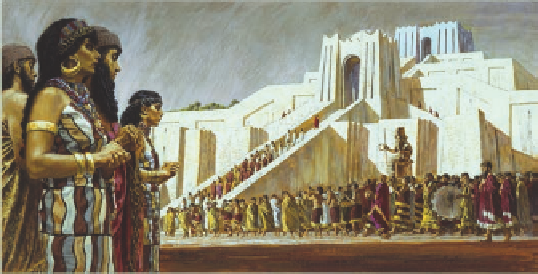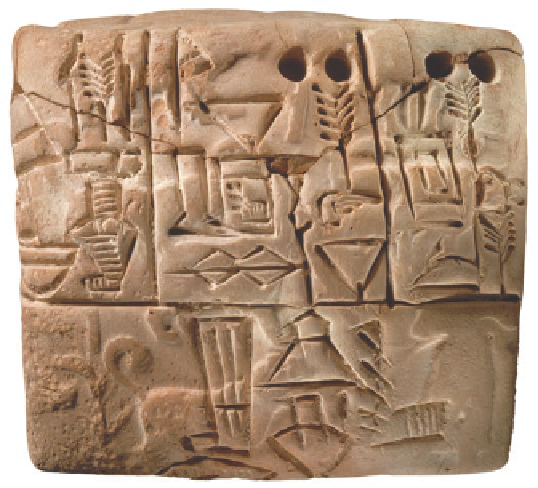Geoscience Reference
In-Depth Information
Black Sea
Bla
c
k Sea
T
r
Turkey
r
r
r
r
r
r
r
T
T
T
T
T
T
T
T
T
T
T
T
T
r
r
r
r
r
r
r
r
r
T
T
T
T
T
T
T
T
r
r
r
e
e
e
e
e
e
e
e
e
e
e
e
e
e
e
e
e
e
e
e
e
y
Syria
S
S
S
S
S
S
S
S
S
S
S
S
S
S
S
S
S
S
S
S
S
S
y
r
r
r
r
r
r
r
r
a
Mediterranean
Sea
Mediterranean
Sea
Iran
r
a
a
a
a
a
a
a
a
a
a
a
Israel
Isra
e
Sumeria
S
S
S
m
me
r
r
r
r
a
a
Iraq
I
I
I
Ir
aa
a
a
a
a
a
a
a
a
a
q
I
I
I
I
r
a
a
a
a
a
a
a
a
a
a
a
J
J
J
J
J
J
J
J
J
J
J
J
J
J
o
r
r
r
r
r
r
r
r
r
r
r
r
r
r
r
a
a
a
a
a
a
a
a
a
a
n
Jordan
J
J
Nile
River
N
l
l
l
l
l
l
l
l
e
N
N
N
N
N
N
N
N
N
N
N
N
N
R
R
R
R
R
R
R
R
R
R
R
R
R
v
v
v
v
v
v
v
v
v
v
v
v
r
S
u
u
u
u
u
u
u
u
u
u
u
u
u
u
Saudi
Arabia
S
S
S
S
S
S
u
u
u
u
u
d
i
A
a
a
a
a
a
a
a
a
a
a
a
a
a
a
a
a
a
a
i
i
i
i
A
A
A
A
A
A
A
A
A
A
A
A
A
A
i
i
i
i
a
A
A
A
Egypt
E
E
E
E
E
E
E
E
E
E
E
E
E
E
E
E
E
E
E
E
E
g
y
y
y
y
y
y
y
y
y
y
y
y
y
y
y
y
y
y
y
y
y
y
y
y
y
y
y
y
y
y
NORTH
y
250
500
1,000
0
Kilometers
(a)
(c)
Figure 20.14 The ancient Sumerians.
(a) The Sumerians lived
in the lower Tigris and Euphrates valleys in what is now southern
Iraq. This area was part of the Fertile Crescent. (b) Artist's render-
ing of a Sumerian temple. The development of agriculture raised
the carrying capacity of the landscape and allowed people to con-
gregate in smaller places and diversify tasks. (c) The Sumerians
were the first people to use writing, such as seen on this tablet.
arable land and to experience a near-constant state of conflict that
ultimately caused Sumerian society to collapse. The legacy of sa-
linity is still keenly felt in modern Iraq today, where at least 20% of
the potentially arable land is permanently destroyed.
(b)
2500 b.c. wheat production had dropped by 83% and been replaced
by barley. This switch was apparently made because wheat is one
of the least salt-tolerant crops, whereas barley does somewhat bet-
ter. Between 2400 and 1700 b.c., however, barley yields dropped
substantially as salinity increased further and massive crop failures
began soon thereafter. Archaeologists believe that these stresses led
the various city-states in the region to compete for the remaining
The Current Global Extent
of Salinization
Soil salinization is currently a problem in many parts of the
world (Table 20.1). Today, it affects between 20 and 30 mil-
lion hectares (50 and 75 million acres) of the world's current
T A B L E 2 0 . 1
Extent of Salinized Soils Throughout the WorldT
Region
Area in Millions of Hectares
Area in Millions of Acres
Australia
84.7
209.3
Africa
69.5
171.7
Latin America
59.4
146.8
Near and Middle East
53.1
131.2
Europe
20.7
51.2
Asia and Far East
19.5
48.2
North America
16.0
39.5
Source
: FAO/UNESCO.































































